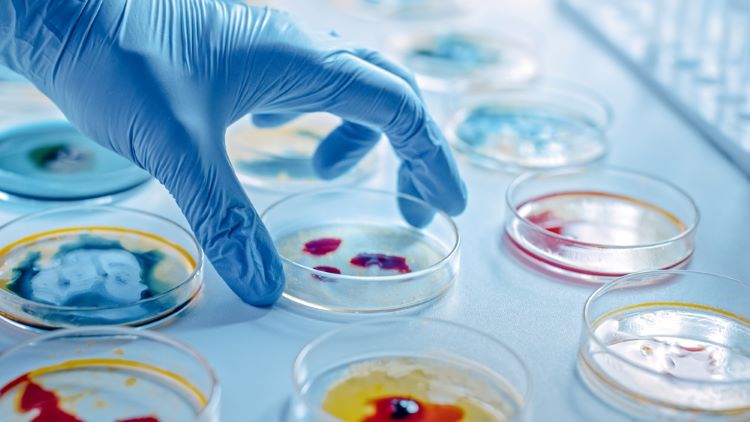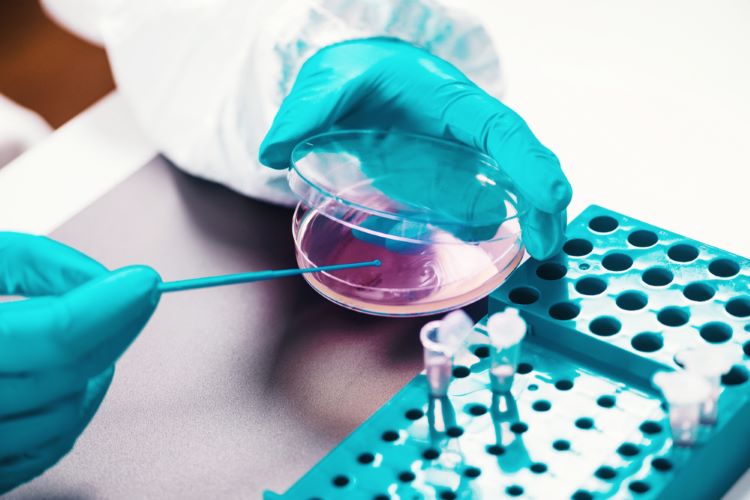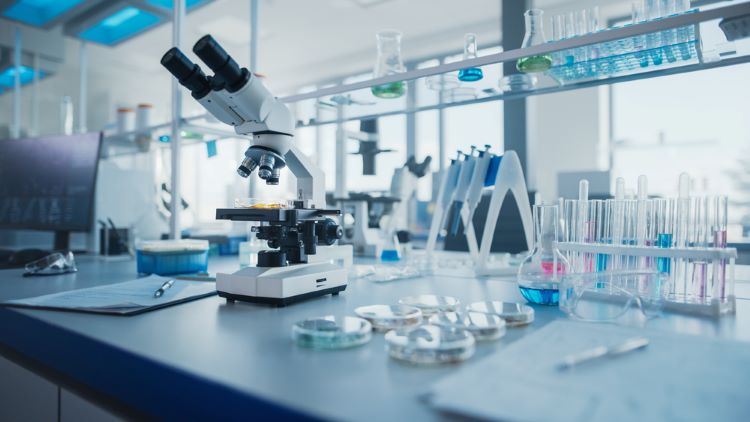Pharmaceutical microbiology: key developments 2022
Posted: 16 January 2023 | Dr Tony Cundell - Microbiological Consulting LLC, Miriam Guest (AstraZeneca), Tim Sandle (Bio Products Laboratory) | 1 comment
Here, microbiology experts Tim Sandle, Tony Cundell and AstraZeneca’s Miriam Guest reflect on key developments in pharmaceutical microbiology during 2022.


This Q&A covers the key developments in pharmaceutical microbiology in 2022, featuring insight from pharmaceutical microbiology experts:
- Dr Tim Sandle, Head of Microbiology, Bio Products Laboratory Limited
- Dr Tony Cundell, PhD, Principal Consultant, Microbiological Consulting, LLC
- Miriam Guest, Principal Microbiologist at AstraZeneca.
Regulation, particularly Annex 1, was identified as a key focus for 2022.
“Clearly the number one challenge in 2022, as mandated by the EU GMP Guidelines for the Manufacture of Sterile Medicinal Products Annex 11, is the development of a Contamination Control Strategy (CCS),” Tony Cundell noted. He warned, “Implementation of a CCS will require more than writing documents.”
Changes may be needed, such as improved corporate culture, information management, retraining of personnel, and upgraded facilities, suggested Cundell. He questioned how regulators will enforce revisions to Good Manufacturing Practice (GMP) regulations.
Another major topic covered by the experts was technological advances.
According to Tim Sandle, new technologies mean: “The skill profile of the ‘traditional microbiologist’ is altering…”, affecting microbiologists working in the modern pharmaceutical microbiology lab.


Specific technologies expected to be pivotal include microbial identification matrix-assisted laser desorption ionization time-of-flight mass spectrometry (MALDI-TOF).
“Connectivity between the laboratory and manufacturing facility is growing, and the use of digital tools will continue to build that integration,” commented Miriam Guest. She emphasised that for technological connectivity to be established, interpersonal connectivity with IT colleagues is important for smooth integration.
What were the main challenges for pharmaceutical microbiology in 2022?
Tim Sandle:
The adoption of EU GMP Annex 1 is occupying a lot of time across the pharmaceutical sector and various projects will stem from that in relation to contamination control. There is an expectation that more thorough, science-based quality risk assessments are developed and that these are ‘proactive’, in terms of looking for contamination risks before they occur.
Ideally, microbiology needs to transition to adopt as much real-time assessment as possible, such as online water monitoring and assessing cleanrooms through technologies like spectrophotometric-based viable and inert particle counting.
Within the microbiology laboratory, some challenges remain with data integrity, especially with the reading of agar plates. Automated colony counters have advanced but there remain some limitations when it comes to mixed cultures, merged colonies, colonies close to edge of plates and so on. This places a continued reliance upon plate reading and the limitations of human vision. This also occupies a large resource, given the US Food and Drug Administration (FDA) requirement for double plate checking using a second ‘independent’ person.

Tony Cundell:
Perhaps the second greatest challenge is the ongoing transition from products based on small molecules to large molecules to cellular therapies. Cellular products directed towards personalised medicine have short manufacturing cycles, small batch sizes, demanding analytical methods, and short shelf lives. Their manufacturing processes are viewed as going from vein to vein involving cell donation, cell selection, gene modification, cell expansion, finishing, distribution, to administration. All require aseptic manipulation, hence have microbial contamination risks. The US federal drug GMP regulations that first became official in 1977 and their European counterparts will need to be re-interpreted for this new generation of products. The FDA is doing this through the publications of Guidance for Industry.
It has been important to build and maintain relationships with our colleagues in IT, to ensure that new technology adoptions are integrated and meet the requirements to operate in a GMP laboratory.”
Miriam Guest:
We are creating more ‘data’, with the adoption of modern techniques. Our data isn’t necessarily an agar plate anymore, with digital records, or direct capture of results – this is fairly new in our microbiology labs that are steeped in tradition. It has been important to build and maintain relationships with our colleagues in IT, to ensure that new technology adoptions are integrated and meet the requirements to operate in a GMP laboratory.
What is the most important lesson you learned in 2022 relating to pharmaceutical microbiology and manufacturing?
Innovation will be driven by an adequate supply of scientifically trained graduates from our universities and technical institutions with the appropriate on-the-job training.”
Tony Cundell:
Contract manufacturing organisations (CROs), start-up companies, established pharmaceutical companies and regulatory agencies are having difficulty recruiting and retaining technically-trained personnel. Innovation will be driven by an adequate supply of scientifically trained graduates from our universities and technical institutions with the appropriate on-the-job training.
Tim Sandle: The skill profile of the ‘traditional microbiologist’ is altering and an understanding of biochemistry and molecular biology is often useful to meet the evolving challenges of the modern laboratory.
How did technological advances in 2022 benefit the pharmaceutical microbiology sector?
Tim Sandle:
Although it is not new, matrix-assisted laser desorption/ionization-time-of-flight mass spectrometry (MALDI-TOF MS) for microbial identification has become the required piece of equipment for processing a large number of samples. This is particularly important in sterile manufacturing facilities where the requirement is for any colony from a Grade B cleanroom to be identified, in addition to Grade A isolates, together with a representative selection from other cleanrooms. Large scale identification also plays an important part in designing the cleaning and disinfection aspects of the contamination control strategy. MALDI-TOF works on the basis of the ionisation of chemical compounds and measurements of their mass to charge (m/z) ratio. These create a specific microbial fingerprint (a peptide mass fingerprint) allowing identification upon comparison with databases. The time to result is around one minute.


Miriam Guest:
Not only are we using amplified adenosine triphosphate (ATP) bioluminescence for rapid sterility on our new and legacy products, we are also applying it in suspect positive media fill or sterility test units where we have a product that renders the media turbid and we need an unequivocal result.
We had one instance, on technical material, where we needed to meet tight timelines. While it was not made under true aseptic conditions, nor manufactured for human use, we were confident it would meet the sterility requirement we needed for the subsequent testing.
[Using ATP bioluminescence for rapid sterility] really highlighted the benefits of adopting new technology in the microbiology lab”
We took the step to execute a sterility test via the ATP bioluminescence (we did a quick sample screen prior to ensure it did not interfere) and despite the broth looking absolutely crystal clear, we got a positive hit on the ATP. We executed our standard subculture steps, and did a broth extract, where we executed a MALDI-TOF prior to the observation of visible growth on the subculture agar plates. This early information on the ID enabled us to ensure our subculture step was suitable to recover the likely organism. In this circumstance, it really highlighted the benefits of adopting new technology in the microbiology lab and supported project timelines. We simply would not have been able to achieve this if we only had traditional techniques available.
Tim Sandle:
Microbiologists are deploying digital tools to help with the preparation and review of contamination control. Where these are based on the risk tool hazard analysis and critical control points (HACCP) they can prove to be especially useful when looking for sources of contamination, vectors, opportunities for risk reduction and monitoring locations.
The safety and efficacy of mRNA vaccines should be a game changer and is the likely solution to antibiotic-resistant microorganisms and emerging viral pathogens.”
Tony Cundell:
The safety and efficacy of mRNA vaccines should be a game changer and is the likely solution to antibiotic-resistant microorganisms and emerging viral pathogens. Our industry, assisted by past public research funding and the flexibility and responsiveness of regulatory agencies such as the FDA, was able to progress from the viral base sequencing to FDA emergency authorisation of a SARS CoV-2 vaccine in 11 months was truly remarkable. The previous record for vaccine development and approval was four years for the measles vaccine. Perhaps we will see a universal flu vaccine in the near future.
What were the most exciting innovations in pharmaceutical microbiology in 2022?
Tim Sandle:
The use of microorganisms to create medicines and an understanding of how microorganisms interact with medicines, especially in relation to the human gut microbiome continues to be an exciting area, especially in the field of personalised medicines.
Another exciting development is the promise that modifying the composition of our microbiome will protect us from bacterial infection and even mitigate chronic diseases.”
Tony Cundell:
Another exciting development is the promise that modifying the composition of our microbiome will protect us from bacterial infection and even mitigate chronic diseases. For example, in September 2022, the company Rebiotix, Inc. presented their pathway for regulatory approval to the FDA Vaccines and Related Biological Products Advisory Committee for a faecal microbiota-based live biotherapeutic to treat recurrent Clostridioides difficile infection, which is a major Healthcare Acquired Infection (HAI). The next step beyond faecal matter transplantation will be treatment with selected intestinal bacterial cultures.
In November 2022, the FDA approved the first faecal microbiota product for the prevention of recurrence of C. diff infection in adults…
Tim Sandle:
One interesting area is with Raman spectroscopy, which has been demonstrated to be capable of assessing samples to allow single-cell analyses and identification of microbes from various types of samples.
Technologies that I find exciting are biofluorescent particle counting methods (BFPC) for pharmaceutical-grade water monitoring and air cleanliness monitoring in aseptic processing areas and use of biomarkers for sterility testing (Huang et al, 2022 The ratio of nicotinic acid to nicotinamide as a microbial biomarker for assessing cell therapy product sterility Molecular Therapy Methods & Clinical Development 25: 410-4252). BFPC will move environmental monitoring to a real-time in-process control while biomarker measurement is a unique approach to sterility testing.
Miriam Guest:
Connectivity between the laboratory and manufacturing facility is growing, and the use of digital tools will continue to build that integration. I think we’ll see our labs change significantly over the next five to 10 years.
Annex 1 highlights the topic of automation in the manufacturing area as a way to eliminate human interventions and the same can be applied to the quality control (QC) testing environment.”
Automation is another area, where we have implemented automated solutions and will continue to look for opportunities as they become accessible to the microbiology labs. Annex 1 highlights the topic of automation in the manufacturing area as a way to eliminate human interventions and the same can be applied to the quality control (QC) testing environment. This has a range of benefits, from the efficiency in enabling us to focus our skilled microbiologists on areas where they can add the most value, but also in having tracible audit trails of activities associated with a sample.
What major regulations will impact the pharmaceutical microbiology sector in the next five years?
Tim Sandle:
Currently, EU GMP Annex 1 is the main challenge that many pharmaceutical microbiologists are examining. While most facilities will be meeting most of the requirements, it’s the level of detail that presents a challenge. Especially with collating evidence, formulating risk assessments and adding detail to the contamination control strategy.
It is expected that the FDA will update their aseptic processing guidance, using Annex 1 as a model, given that the FDA were one of the organisations who were part of the Annex 1 development process via Pharmaceutical Inspection Co-operation Scheme (PIC/S).
In the recent FDA guidance on nanomedicine, the microbiological control aspects are featured. Nanotechnology and the innovations with advanced cellular products will create challenges in terms of process controls and with the qualification of test methods.
We also have some strong chapters in the European and US Pharmacopeias for rapid and alternative microbiological methods, but the regulatory part is lagging. It is possible that more guidance will emerge to fill this space.
Tony Cundell:
Microbiologists everywhere welcome the emphasis placed in the EU GMP Annex 1 revision on Quality Risk Management (QRM). We will have more opportunities to influence the development of future formulations and manufacturing processes.
The emphasis on data integrity and failure investigations during regulatory inspections will undoubtedly impact pharmaceutical microbiology.”
The emphasis on data integrity and failure investigations during regulatory inspections will undoubtedly impact pharmaceutical microbiology. The subjectivity and variability of plate counting has spiked an interest in the qualification and implementation of automated plate readers.
Miriam Guest:
We will see more guidance provided on the application of machine learning and artificial intelligence. I think it will be important that we work with our regulators to ensure activities are executed within the framework of clear guidance.
I think it will be important that we work with our regulators to ensure activities are executed within the framework of clear guidance.”
As new technologies become business as usual, I expect the regulators will provide clearer stand-alone chapters for some of the methods that are currently classified under the ‘alternative microbiology methods’. As these move into the mainstream, there will be new technologies following, and the appropriate frameworks will be provided.
The other side is the pipeline of new pharmaceutical products. As we transform how we make our medicines, we will transform our control strategies, and the regulatory guidance today will transform alongside.
About the authors






References
- The Rules Governing Medicinal Products in the European Union Volume 4 EU Guidelines for Good Manufacturing Practice for Medicinal Products for Human and Veterinary Use [Internet]. https://www.gmp-compliance.org/guidelines/gmp-guideline/eu-gmp-annex-1-manufacture-of-sterile-medicinal-products European Commission; [cited 2023Jan11]. Available from: http://academy.gmp-compliance.org/guidemgr/files/20220825_GMP-AN1_EN_0.PDF
- Huang et al. The ratio of nicotinic acid to nicotinamide as a microbial biomarker for assessing cell therapy product sterility. Molecular Therapy – Methods & Clinical Development. 2022Jun;25:410–24. Available at: https://pubmed.ncbi.nlm.nih.gov/35573051/
Related topics
Artificial Intelligence, Big Pharma, Biomarkers, Biopharmaceuticals, Formulation, Interviews, Lab Automation, Lab Equipment, Manufacturing, Mass Spectrometry, Material Identification, Microbiology, Microbiomes, Nano-medicine, Personalised medicine, QA/QC, Raman Spectroscopy, rapid sterility testing, Research & Development (R&D), Spectroscopy, Technology, Therapeutics
Related organisations
AstraZeneca, Bio Products Laboratory Limited, Microbiological Consulting LLC, The US Food and Drug Administration (FDA)
Related drugs
Related people
Dr Tony Cundell (Microbiological Consulting LLC), Miriam Guest (AstraZeneca), Tim Sandle (Bio Products Laboratory)










Very good overview of the key events shaping the microbial world, especially with what rapid microbiology can deliver for pharmaceutical microbiology.